Club History
History of the Kingston Wheelers
The Kingston Wheelers Cycling Club was formed in 1924 by Bill Orpin. After going to speak to clubs in Wimbledon and Richmond, Bill decided that Kingston should have its own club and so placed an ad in the Surrey Comet with instructions for interested cyclist to meet outside a café on the High Street near the police station. He was amazed when 64 of them turned up to ride, and Bill along with 5 of those, went on to form Kingston’s first cycling club since the 1880s. The maiden club run left from the Coronation Stone in Kingston, and the Club immediately adopted the Coronation Stone as the Club’s emblem (which remained prominent until 2003). Right from the start the Club was very formally set-up and in its first year of existence held time trial races and became affiliated to the NCU, CTC, SCCU and WLCA*.
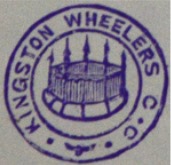
Probable identities of four of the other five original members have been uncovered, they are:
F. R. Rimes – the club’s first President.
H. C. Dare – who took on the role of Club Secretary.
H. L. Thompson – our first Racing Secretary.
Mr Fitch – who held the early club 10 mile TT record (and whose son David E. Fitch was part of the reformed club from 1953 into the 1970s)
Although it is also known that H. Thompson’s brother, Ernest Hubert Thomson, also joined around this time, so he may have been the sixth founding member.
Throughout its early history, Kingston Wheelers was known for being a very social club as well as having a competitive and enthusiastic racing element. The club’s emphasis was on cycling for pleasure, although several members excelled at racing and long distance events. In its earliest years, the majority of the membership were young adults, in their twenties. Several married couples were members and family & friends would join club rides and social events.
Prominent members who joined during the ‘20s were the brothers L.C. and R.C. Wright, and E. G. and C. Godolphin, and other early members from this period included Gil Jessop, who joined in 1930, Stuart Bedingfield, H. Prickett and J.A. French. This was a strong period in our Club’s history, with the popularity of cycling locally reflecting a healthy membership level.
In the years following the introduction of the first pedal-driven bicycles, known as velocipedes, to Britain in 1869, several cycling clubs formed locally, as the new machines quickly proved popular. There were 4 clubs in the Kingston area, but none of them lasted for more than a few years so when Bill founded the Wheelers it had been almost 40 years since Kingston had a cycle club. 40 years in which the design and manufacture of the bicycle had changed dramatically. The clubs were:
Kingston Bicycling Club, est 1876.
Kingston Institute Bicycling Club, est 1879.
Surbiton Bicycling Club, est 1878.
Norbiton Bicycling Club, est 1879.
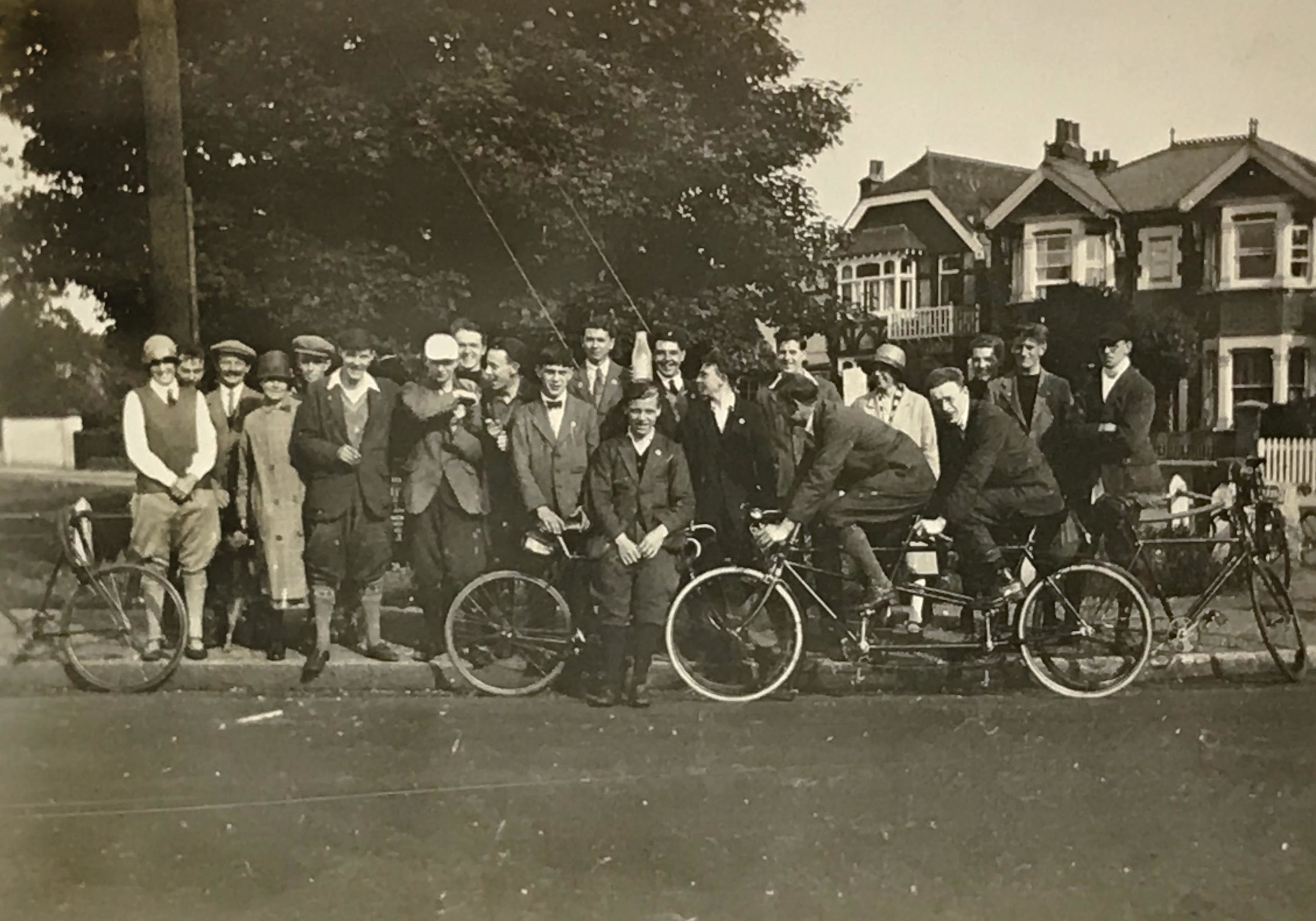
Wheelers Group Photo c1929 – our founder Bill Orpin (near centre holding the milk bottle, his wife Doris is far left)
The War and Post War
With many of the Kingston Wheelers having been drafted to serve in WWII, the club was disbanded in 1941. Several male members were called up to join the forces, across many parts of the world, and our women members drafted into engineering and other roles to help the war effort. Our Club Secretary at the time, Arthur Somerville, was killed in Singapore, and KWCC member Harry Hudson died in the English Channel during the Dunkirk retreat.
By 1946 a few of the (former) club members would meet regularly at each other’s houses, particularly in Bill and Gil’s, in order to plan rides together and do sessions on the rollers. Despite these regular club events the Wheelers were not officially reformed until 1953, by Gil and Bill, who would go on to lead the club, as General Secretary and President respectively, for more than another 30 years.
Membership
The club’s membership has fluctuated over the decades with long periods of both growth and contraction. Very quickly, from its birth, KWCC attracted members to become an active and prosperous club, before membership started to dip by 1930. During 1933-1934 membership grew by about 60%. Once the club reformed, by the mid-1950s membership had increased to reach its 1940 level, of over 50 including several juniors. Throughout most of the 1960s and 1970s this level of membership was largely maintained, with the mid-late ’70s being a particularly strong period for youth membership, many performing strongly at local races. Prominent members who joined during this period were Roger Mitchell, John Bornhoft, Alan Haynes and Paddy O’Donnell.
By 1980 the size of the club started to dwindle and for the next couple of decades attracting new members proved challenging, typically no more than 1 or 2 would become Wheelers per year, often with a greater number leaving. In 1997 the Club’s membership was 37 – a significant minority of the Club were elderly members who no longer cycled but were very much still part of the social scene. So the Club seemed even smaller than it was, and everyone knew each other.
In 2004, under a new committee and leadership, the Club launched a much improved and modernised website and club kit. They attracted attention and so began the next phase of the club’s growth. The emergence of new British talent making the headlines (like Wiggins and Cavendish) around 2007/08 resulted in a mini boom for cycling and the Club, with London 2012 providing the third and most significant boost to KW’s membership during this period. After over 20 years of the membership largely sitting below 40 in total, by the beginning of 2006 the club had 61 members, and by the end of the noughties the club had grown to 266. In December 2012, KWCC’s membership had soared to 479. To give some context, at this point more cyclists had joined the club during the past few years than had joined it it’s first 80 years! But the growth didn’t stop, we exceeded 600 members in 2015. With so many of our racing members (c.100) having elected to join Paceline, membership in recent years has not been quite as high – typically averaging around the mid-500s over the past five years. As our centenary year begins our club has 523 members.
Female membership
It is believed that membership in the Club before the war was less formalised with wives and girlfriends quite often joining club runs, whether or not they were strictly members is unknown. Once the Club reformed in 1953 and started to grow there were no women in our membership, but by 1960 we had one female member and couple of years later a second. Janet Howell (later Mitchell) joined and remained formally a member until at least 1980 (and a regular attendee at club socials beyond that) but then we had no female members for several years, until Nicola Wadham joined in 1990, and who remains a member to this day. Subsequently, we had some women join for brief periods but it wasn’t until 2003 that the club had another female joiner, in Sheila Hunt, who would become an established member. By the end of 2009, as the club continued to grow, our female membership had increased to 18, increasing to 68 by Dec 2014, before peaking at 89. Currently KWCC has 72 women members, which is 14% of the total.
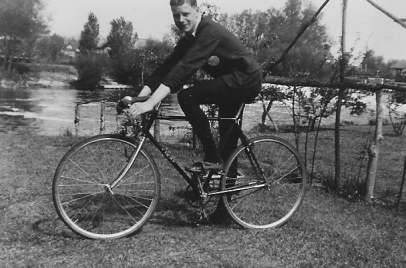
1934 – Club member Stuart Bedingfield, Shepperton
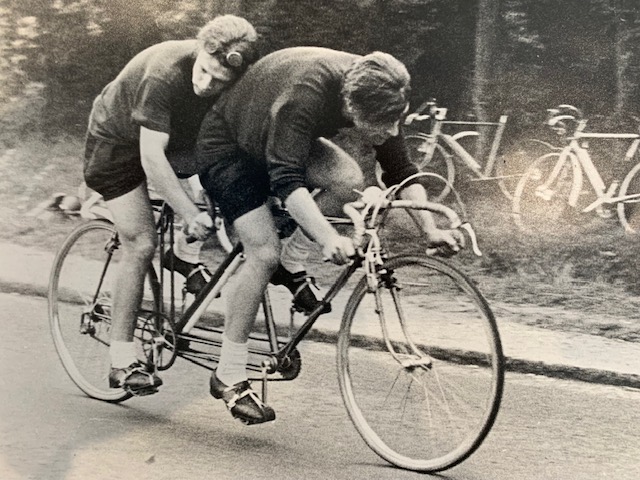
Late 1930s – Lon Pullen & Dennis Pullen. Later, Lon and Dennis’ son Lyndsay became long term KWCC members.
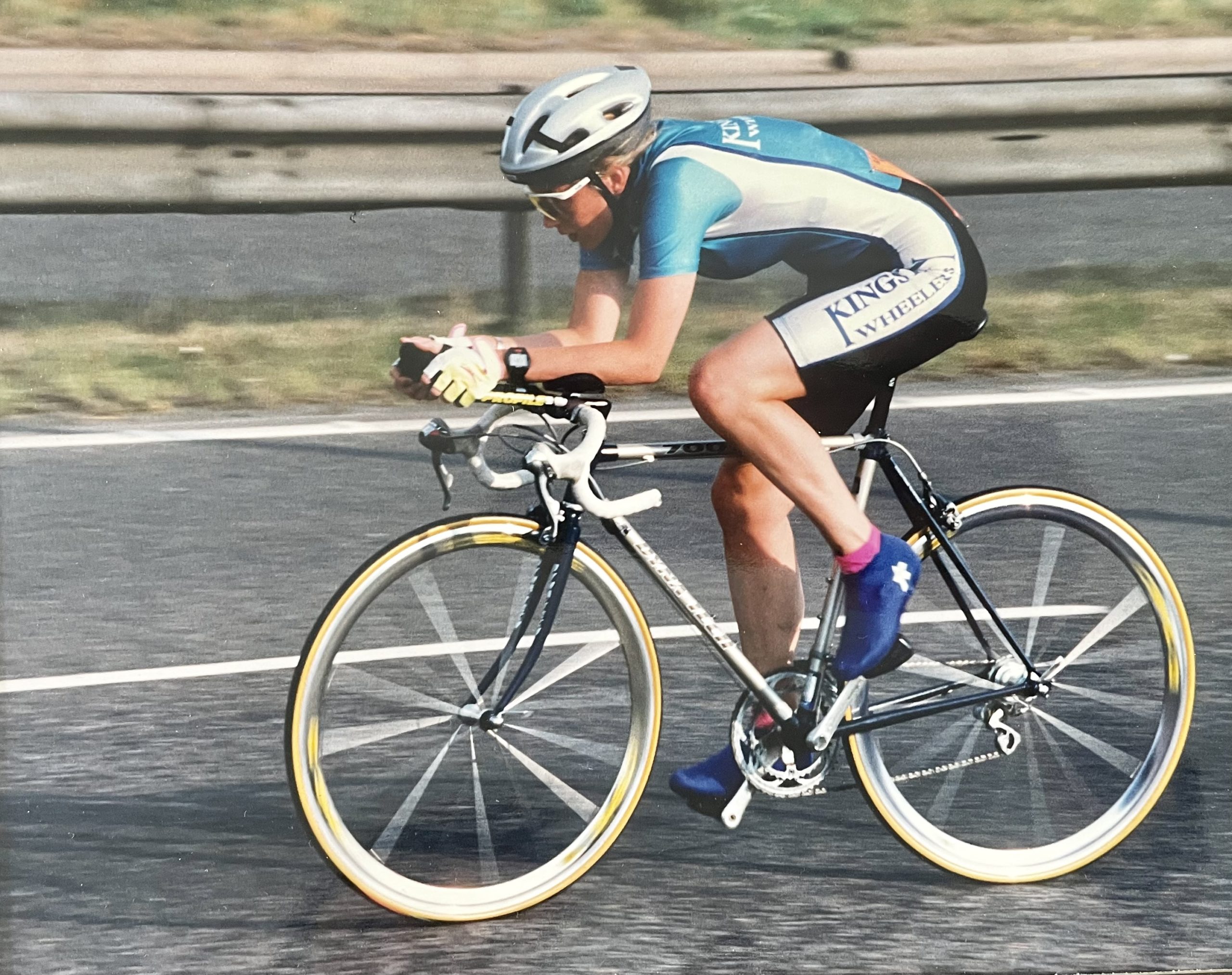
Early 1990s TT race – Nicola Wadham
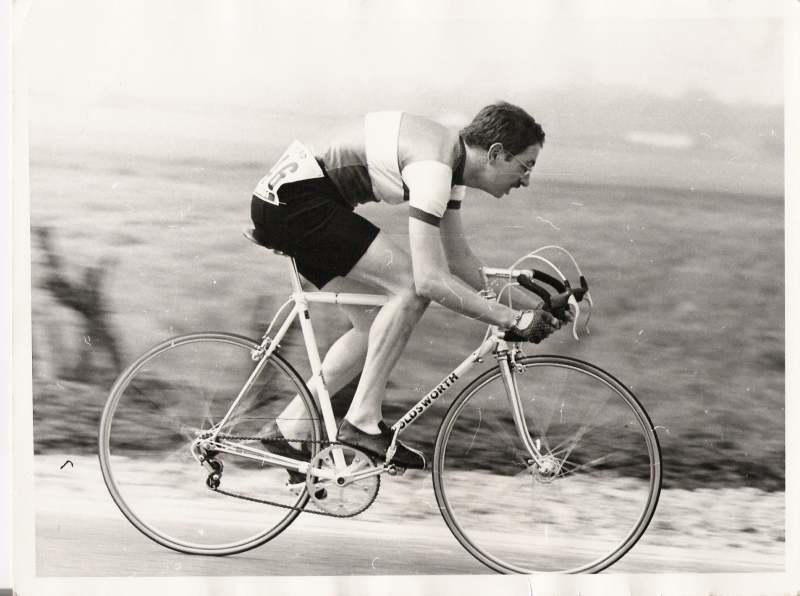
Early 1970s TT race – Mike Broadway
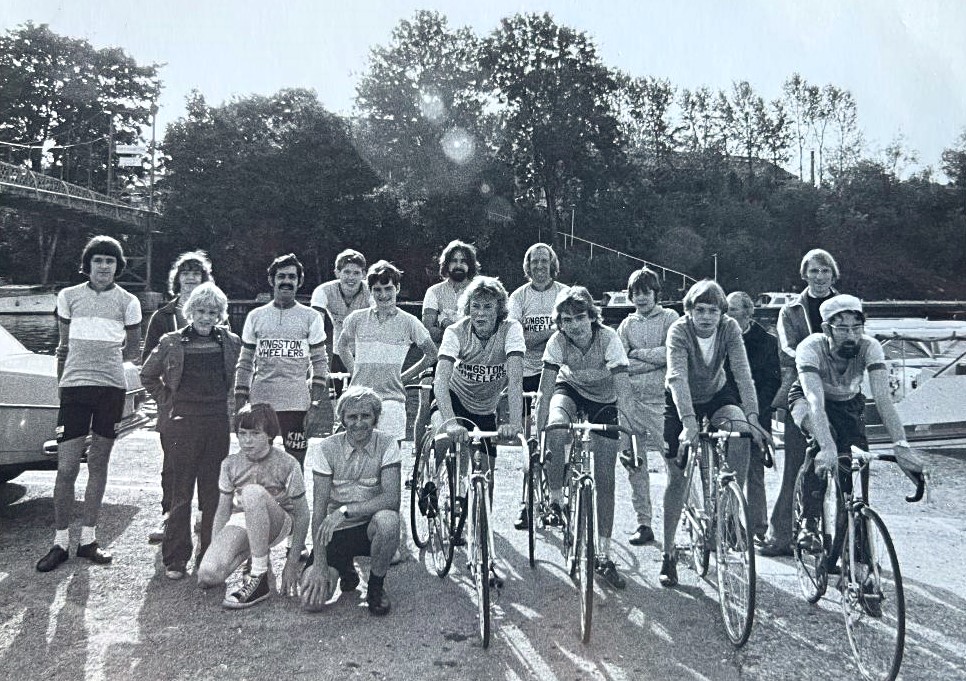
1976 – Club 10 TT start line at Hampton
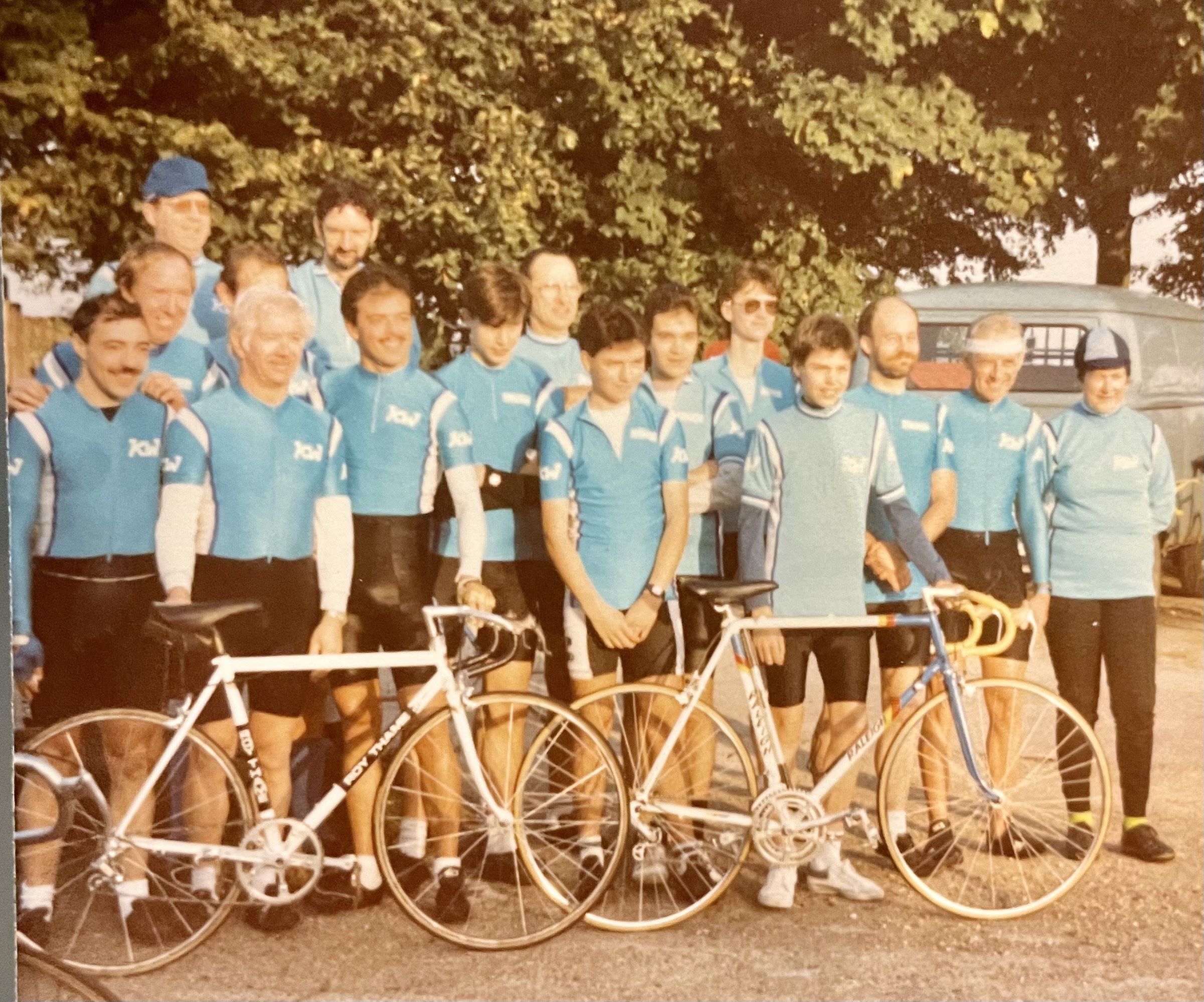
c1987 – Club 10 TT start line at Hampton
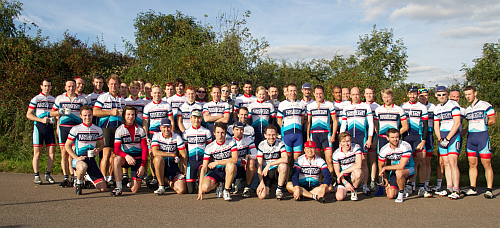
2013 – Club Championships at Hillingdon
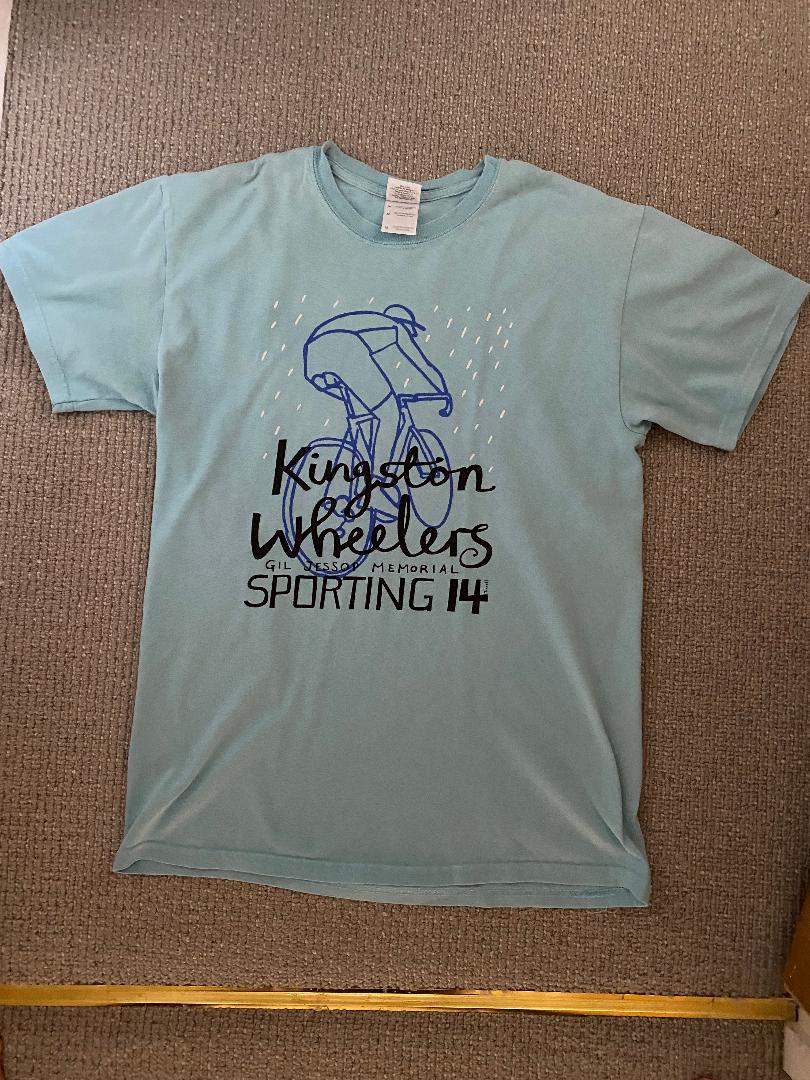
Race Events
For a whole century members of the Kingston Wheelers have been active in the local (and sometimes national) racing scene, as well as in many endurance challenges from reliability trials, randonnees, audaxes, and in more recent times cyclo-sportives, both at home and abroad. The earliest racing members started out time trialling and during the Club’s history TTs have proven to be the most commonly contested racing discipline, but mountain bike, track, cyclo cross and particularly road racing has also been very popular.
Throughout the 1930s and 1950s many members would often ride 12 and 24 hour TTs which had their prestige. During this period and beyond, Kingston Wheelers would attract a broad range of cyclists to join, typically social riders, tourers and those keen to partake in racing – while Clarence Wheelers attracted the more serious racing cyclist, several of whom would go on to ride at national level. In a modern day parallel, over 50 years later, while KWCC remains a very inclusive and broad club, Paceline RC was formed as a home for those Wheelers wanting to really focus on racing.
Sporting 14 and Hill Climb
From the Club’s beginning, KWCC was active in hosting inter-club time trial races with the Wimbledon Cycling Club that was in existence back then. Club and inter-club events have been regularly ran through our history, with the closest affiliations being with Ross Wheelers and Twickenham CC (pre-WWII) and in the second half of the 20th century with the South Western Road Club and the Kington Phoenix Road Club.
However, running official open events has been challenging for much of our history due to our small membership, instead we would provide marshals when other local clubs would host, and at times the Wheelers would host a stage of an event. Nevertheless, Kingston Wheelers hosted a well attended 25 mile open time trial during the 1960s and ‘70s on the Portsmouth Road, Guildford. After another period of not running our own open race, the club set up the Sporting 14 time trial around 1990 – a traditional early season undulating test against the clock – and renamed following Gil Jessop’s death.
Prior to the Sporting 14, at the same time of year (in February) the club hosted reliability trials, over various distances starting from Hook recreation ground.
In 2007, the Club created another annual open race against the clock in memory of a long standing club leader: The John Bornhoft Hill Climb. This expanded on the club hill climb event that moved from various climbs in Ranmore Common, Box Hill and Coldharbour Lane. Today, the club is very active in hosting a range a races across multiple disciplines with KWCC road races, track days, cyclocross and audax having become fixtures on the calendar.
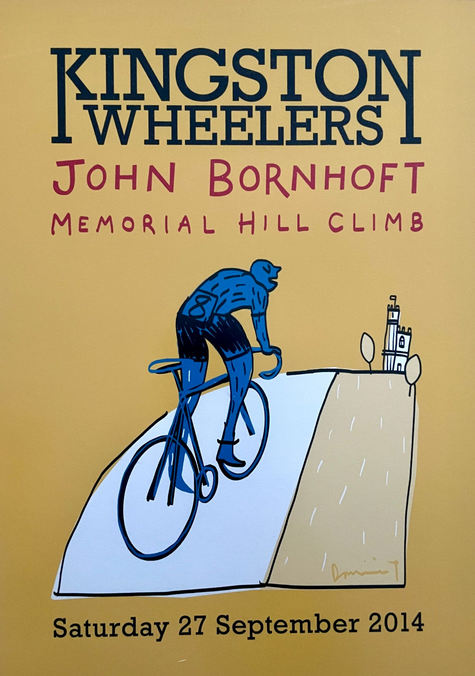
This a known club run route from January 1978. Hook – Cobham – Ripley – East Clandon….where the club run would split into 3:
– The juniors and elders, led by Gil, would proceed back via Leatherhead and Hook.
– The faster guys (known as the hard-riders) sped on to Burpham, then Guildford and back via Esher.
– The training ride totalled a 70 mile run on to Merrow, Newlands Corner, Gomshall, Dorking (tea stop) and back through Leatherhead and Hook.
Another two documented routes from the 1970s:
1: head out to Leatherhead and on to Dorking – Parkgate – Newdigate -Beare Green – Ockley and returning via Box Hill.
2: Hook – Shepperton – Chertsey – St Anne’s – Egham – Runnymede – Great Windsor Park – Sunninghill – Virginia Water – Walton – Kingston
Club Runs
From 1924 – 1941, club runs would always depart from the coronation stone and for much of that time two groups would head out on Sundays: the Hardriders would typically meet at 8.40 or 8.50am and the Social section would meet at 9.30 or 9.50am.
During the early years, club run routes would head out towards Burnham Beeches, Hydestile (nr. Godalming) or to Ewhurst and back via Pitch Hill. However, many routes were much longer; particularly in the 1930s the club would often ride incredible distances when compared to today’s club runs. Such routes included those to New Alresford, Hampshire, Brill and Amersham in Buckinghamshire, Whipsnade Zoo in Bedfordshire, Chichester, and Shoreham-on-Sea. Early recorded tea stops include the Broadwater Hotel in Godalming, Warner’s in Ripley, and Holloway’s in Egham. Also in the ‘30s, KWCC would hold an annual ‘all-night run’ to Bognor each June leaving the coronation stone at 11.30pm on a Saturday.
Following its reformation, the club moved its club run meeting point to Chessington where Gil lived – Gil and Bill jointly led the first club run of the post-war club. It is known that during the 1950s the club organised 3 club rides, called Racers, Intermediate and Family – and all 3 groups would meet at the same tea stop, most often in Abinger Hammer.
After a period, the club run starts moved to Hook (on Hook Roundabout Parade, outside a former Sainsbury’s just off the Ace of Spades roundabout) for many years – although special club runs during this period (eg those to the south coast) would depart from the Coronation Stone. Around the end of the 1970s the meet point returned to the Coronation Stone where they would stay until the mid-1980s, at which point they moved to the current meeting place on the corner of Brighton and Portsmouth Roads. For many years, until about 2006 when the club started to grow significantly, there would only be a single ride – all members riding together.
In 2024, although the club run’s official meeting point is in Laithwaites car park, club runs also regularly meet in Kingston Market Square and outside the Old Kings Head in Hampton Wick.
Club Nights
As mentioned, those in the club pre-WWII would gather round each other’s houses in the years following the war for some training but predominantly for socialising and for organising, which has traditionally been the basis of the club nights. To update KWCC members on club matters, seek volunteers for events, hand out entries to upcoming races, plan rides between members, and of course to create friendships over a pint.
When the Club was reformed with initially just a few members, these club nights continued in this form, mainly staged in Gil’s house. At the point when attendance of club nights reached as high as 18, Gil decided his house was becoming too cramped and suggested a venue be found. Ever since, the Wheelers have used a great many venues to host our club nights, mainly pubs and schools.
The first known club night venue, in the 1950s, was the old Red Lion pub on Red Lion Road, Tolworth. By the late 1980s, when our club nights were held at Latchmere Remand Centre in Ham, we were on our 10th venue since the club reformed. The night of the week for staging club nights has also changed over the years but have mainly been on Mondays, Tuesdays or Thursdays. In more recent times their formality and need to be a forum for distributing information and organising has also altered.
Since the long standing club night venue Latchmere Remand Centre, club nights have moved about more frequently including being hosted at the Hand and Flower (Ham), Hawker Centre, Willoughby Arms, Druid’s Head (all Kingston) before rotating post-Covid between pubs such as The Albion, The Park Tavern (both Kingston) and The Foresters Arms (Hampton Wick).
Sponsorship
In 2004, eighty years after our formation, the Club sought sponsorship for the first time in order to put the Club on a more solid financial footing and also to allow a subsidy on club kit. Our sponsors were added to our club kit in a new design, initially they were Cluttons, OTM, Telford and Evans cycles.
After a year our agreement with Cluttons ceased and in 2009 Evans was replaced by Sigma Sport and OTM by PredictorPro – at this time we also added NSPCC to our jerseys and made a donation to them for each jersey sold. It was decided in 2012, with the Club’s balance sheet in rude health, that we would cease with our sponsorship deals – ending our eight year foray.
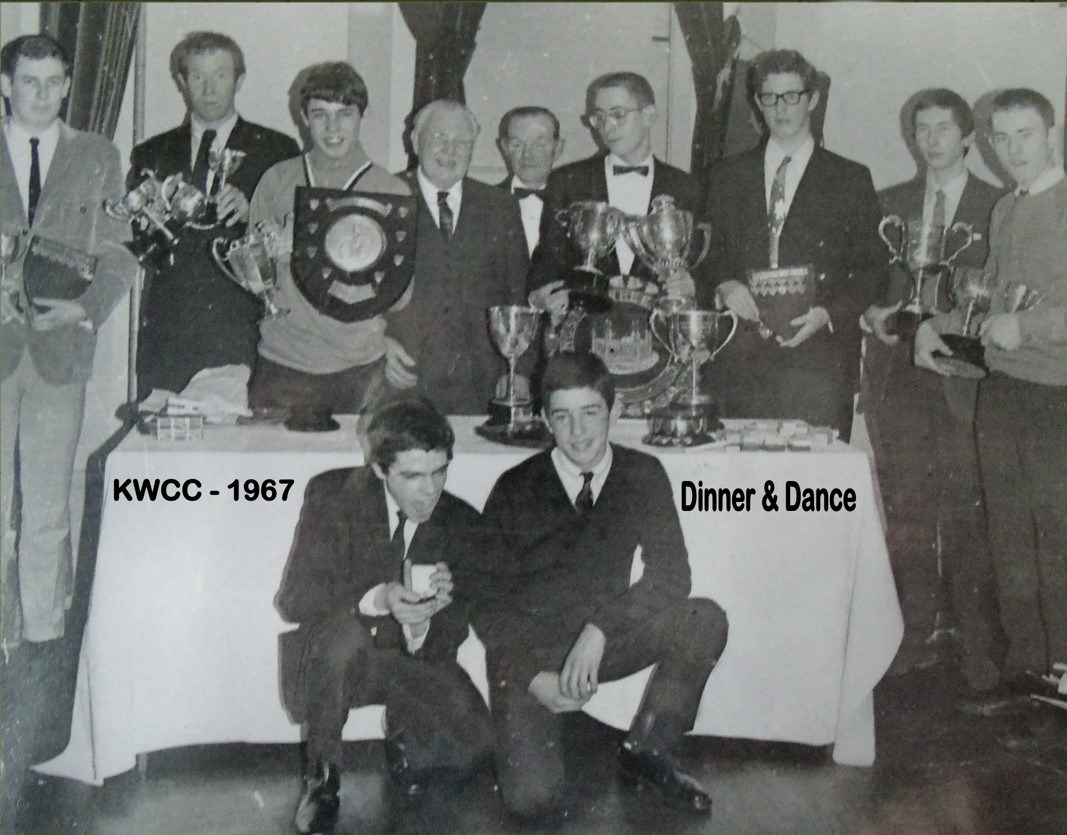
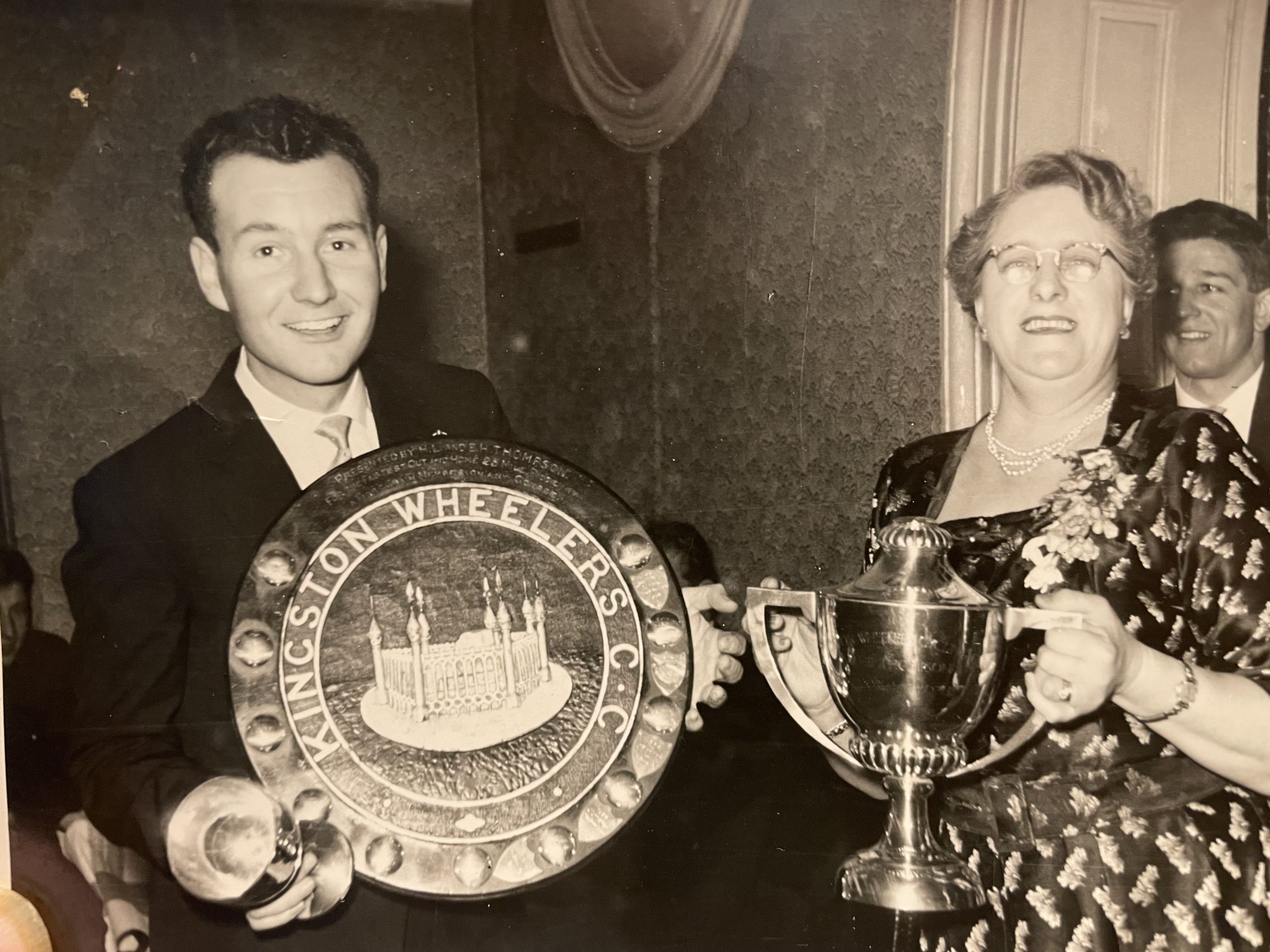
John Litster – club champion 1957
Dinner Dance
It may be hard to appreciate now in the twenty first century, but the for most of our history the Dinner & Dance was as much part of the fabric of the club as the weekly club run and the racing.
Every year of the club’s existence from 1924 to 1999, the Wheelers celebrated the achievements of it’s racing members in a very formal and traditional way. From the very beginning the club organised an annual gala to award trophies for each race season, which were called the Dinner & Dance and Prize Presentation evenings. They would always include a speech, multiple formal toasts, and a classical band playing traditional ballroom dancing numbers.
Once the club reformed these nights also would typically include a special guest / guest of honour (most commonly a well known cyclist or sometimes the mayor of Kingston). Eileen Sheridan and Eileen Gray OBE were the most notable and most frequent guest of honours, becoming friends of the Club. Other guests were local cycling champions including Eddie Atkins, Peter Cook and Derek Cottington, or cycling officials like Brian Elliott and David Stalker. The club’s full range of prizes would be presented during the evening, mainly to the racing fraternity, usually by the club president. During the latter decades a number of less formal toasts would be proposed for various goings-on, some comical, within the club during the past year.
Although the Club membership was modest by today’s figures, often these were very well attended events with spouses in regular attendance, and often member’s friends and children would attend, along with parents of our younger cohort; plus former members would be invited. In terms of attendance the mid and late 1970s were the haydays, with around 160 present each year.
During the 1920s and 1930s, the club held their Dinner & Dance nights at various venues in Kingston including the Sun Hotel (on 11 December 1929), the Griffin Hotel (01 March 1933) and Zeeta restaurant (06 December 1933). The first of these events post-WWII, in January 1954, was held in the Royal Oak Hotel, New Malden – before returning to the Griffin Hotel, in Kingston Market Place within a few years (until 1984), and on to The Spa Room in the Richmond Hill Hotel were it remained until 1991. Subsequently, the Club’s Dinner & Dance nights were briefly held at YMCA Surbiton and Kingston Lodge Hotel, before the last few editions took place at the Hotel Antoinette, Kingston.
These were ticketed events, with formal programmes and menus printed, the cost of a ticket in 1976, for example, was £3.30; and had risen to £19 for the final Dinner & Dance in 1999. They also had a wedding feel in their layout with the formal attire, table flower arrangements, the speeches and the head table. These events involved a huge amount of organisation and as the older membership passed on, and with a general movement away from such formality, they were replaced from the year 2000 with a Prize Presentation lunch on a Sunday, straight after the club run.
In March 2024, the club hosted a centenary celebration party with a nod to these grand evenings of old, and although it was not linked to our annual awards presentation, it consisted of a sit down dinner, a live band, and well known guest speaker in Jo Rowsell.
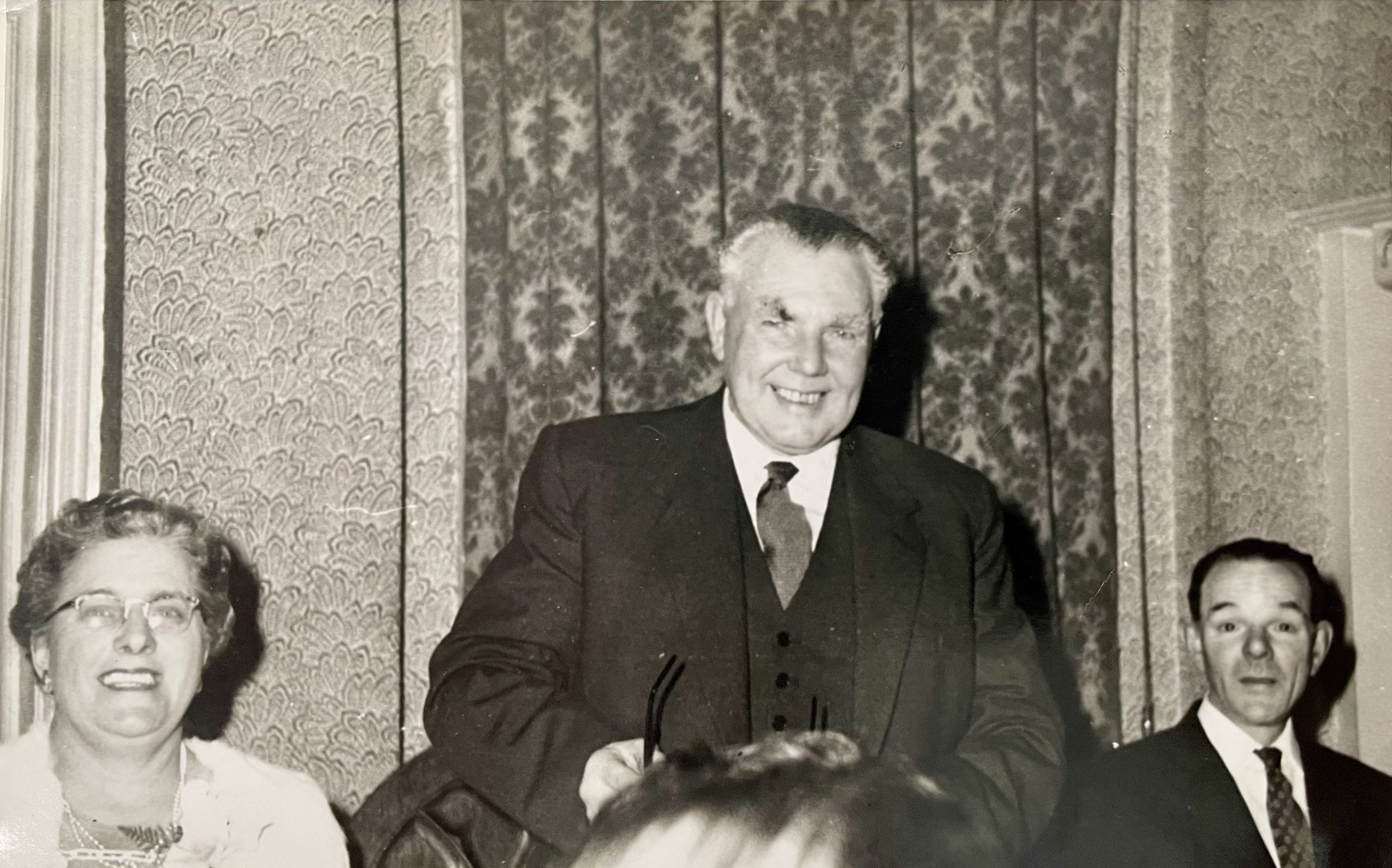
Club president Bill Orpin addressing the membership
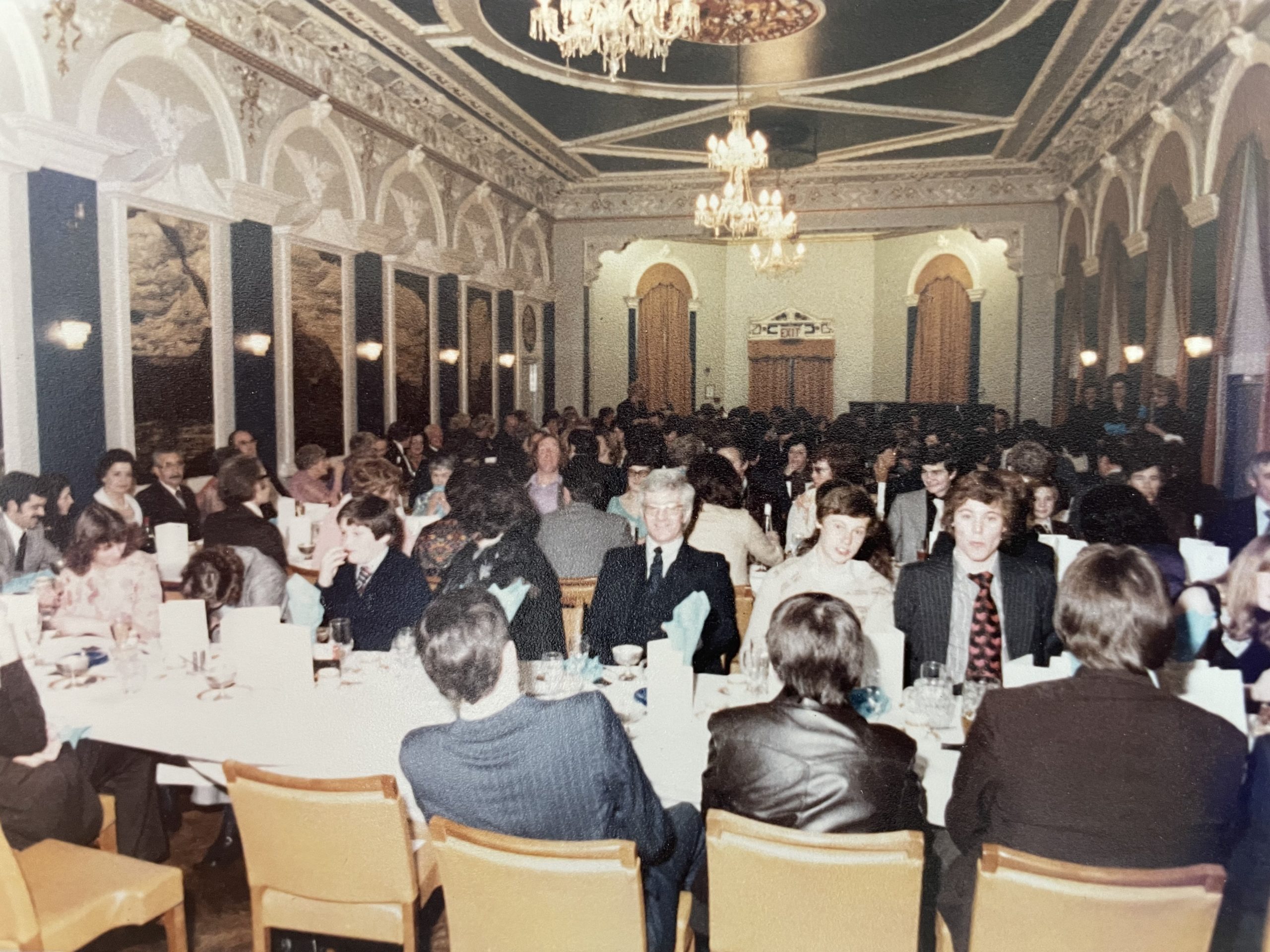
1978 – The Griffin Hotel
